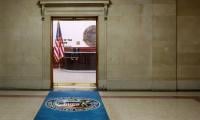Rawalpindi roads getting overburdened
Less crowded, clear and motorist-friendly roads have just been a mirage for Rawalpindi residents. Every inch of the city’s unbelievably poor roads is flooded with private vehicles of every kind, but the traffic planners have remained indifferent to the idea of better public transport system and they are not really up to the challenge.
“The city fathers transport plan is evidently not based on limiting the free growth of private vehicles. Nobody is thinking of implementing this initiative. It is still only an abstract occasional slogan, as hundreds of vehicles are added to the city’s roads every day,” says Saleem Hussain, a taxation officer. “As the city fathers’ promises are termed untrustworthy, and the vehicle sellers and buyers are infamously disobedient, there is virtually no chance for a smooth and efficient public transport system to take shape,” adds Saleem.
“Rawalpindi’s bane has been the lack of a decent, proper system of public transport, Suzukis and wagons are no substitute for spacious buses like Waran, which once provided a breather. There is a need for balancing the existing transport system,” says Moharram Ali, a public transport user. “Escalating vehicular population has severely strained the road infrastructure triggering traffic congestion of uncontrollable level, and in the process affecting our physical, mental and psychological health,” says Zaheer Abbas, a policeman. “The city’s unbearable public transport system has failed to satisfy the travelling public, resulting in a sea of private vehicles. The public prefer private vehicles because they are comfortable,” says Zulqarnain Haider, a traffic guy, weary of his routine duty. “Pindiites have been forced to use private transport since daily travel in taxis doesn’t come cheap. Even wagons and Suzukis are not a good option if you have to change many routes to get to your destination,” says Waheed-ul-Hasan, a corporate sector employee.
“Before buying a car I had to walk almost a kilometre to get to the bus stand to board a bus to Islamabad. Again, I had to walk a fair bit from the dismounting point to reach my destination,” adds Waheed.
“The issue of increasing private vehicles is there for all to observe. Rawalpindi appears to have more private vehicles than public vehicles. Although a fairly large part of the population uses public transport, I think that for the traffic situation to be healthy, a greater portion of the population must use public transport,” says Asif Rizvi, a shopkeeper. “Where every initiative mostly remains an image-building exercise, people can’t be made to realize the importance of using public transport. Introduction of decent types of buses and not wagons and Suzukis to cater to different classes of people should be the initiative,” suggests Adeel Hussain, a social activist.
-
 Emilia Clarke Reveals Real Price Of Playing Daenerys In 'Game Of Thrones'
Emilia Clarke Reveals Real Price Of Playing Daenerys In 'Game Of Thrones' -
 Ex-Chicago Mayor Hit With Lawsuit Over Unpaid Credit Card Bills
Ex-Chicago Mayor Hit With Lawsuit Over Unpaid Credit Card Bills -
 Andrew Risks His Relationships With Princess: ‘She’s Supporting The Abused And It’s Festering’
Andrew Risks His Relationships With Princess: ‘She’s Supporting The Abused And It’s Festering’ -
 Harry Styles Unveils New Album After Cryptic Posters Spark Fan Frenzy
Harry Styles Unveils New Album After Cryptic Posters Spark Fan Frenzy -
 Prince Harry Ready To Return To The UK To King Charles But It’ll Depend On How THIS Goes
Prince Harry Ready To Return To The UK To King Charles But It’ll Depend On How THIS Goes -
 Why Isn't King Charles Mourning Death Of His Father's First Cousin?
Why Isn't King Charles Mourning Death Of His Father's First Cousin? -
 Nicole Richie Breaks Silence On Her Daughter's Name Change
Nicole Richie Breaks Silence On Her Daughter's Name Change -
 Truth Behind Chris Noth, Sarah Jessica Parker's Ongoing Feud Revealed
Truth Behind Chris Noth, Sarah Jessica Parker's Ongoing Feud Revealed -
 Baseless Gender Identity Rumors Targeted At Bettijo Hirschi After Todd Bridges Split
Baseless Gender Identity Rumors Targeted At Bettijo Hirschi After Todd Bridges Split -
 'Harry Potter' TV Series Roped In Hans Zimmer For Score
'Harry Potter' TV Series Roped In Hans Zimmer For Score -
 Amy Robach, T.J. Holmes Make Daring Invite To Exes Marilee, Andrew
Amy Robach, T.J. Holmes Make Daring Invite To Exes Marilee, Andrew -
 Louis Tomlinson Gushes Over Harry Styles' Talent
Louis Tomlinson Gushes Over Harry Styles' Talent -
 Brian Austin Green Says THIS Relationship Left Him Feeling 'not Good Enough'
Brian Austin Green Says THIS Relationship Left Him Feeling 'not Good Enough' -
 Amy Robach, T.J. Holmes Shun Former Friends At 'GMA'?
Amy Robach, T.J. Holmes Shun Former Friends At 'GMA'? -
 Timothée Chalamet Shares Nervous Experience From 'Marty Supreme'
Timothée Chalamet Shares Nervous Experience From 'Marty Supreme' -
 'Andrew Leaving One Mansion To Go To Another Mansion'
'Andrew Leaving One Mansion To Go To Another Mansion'



